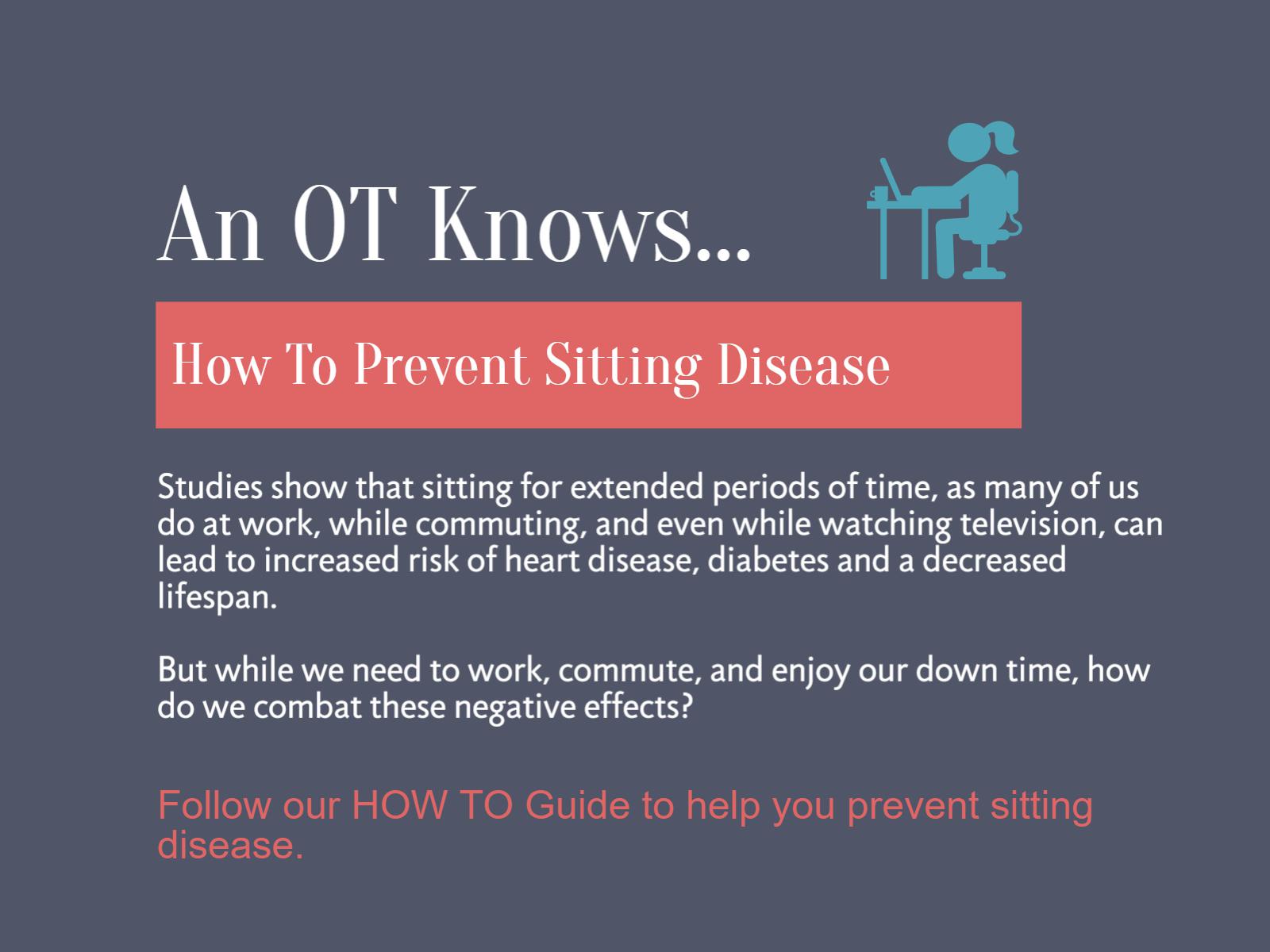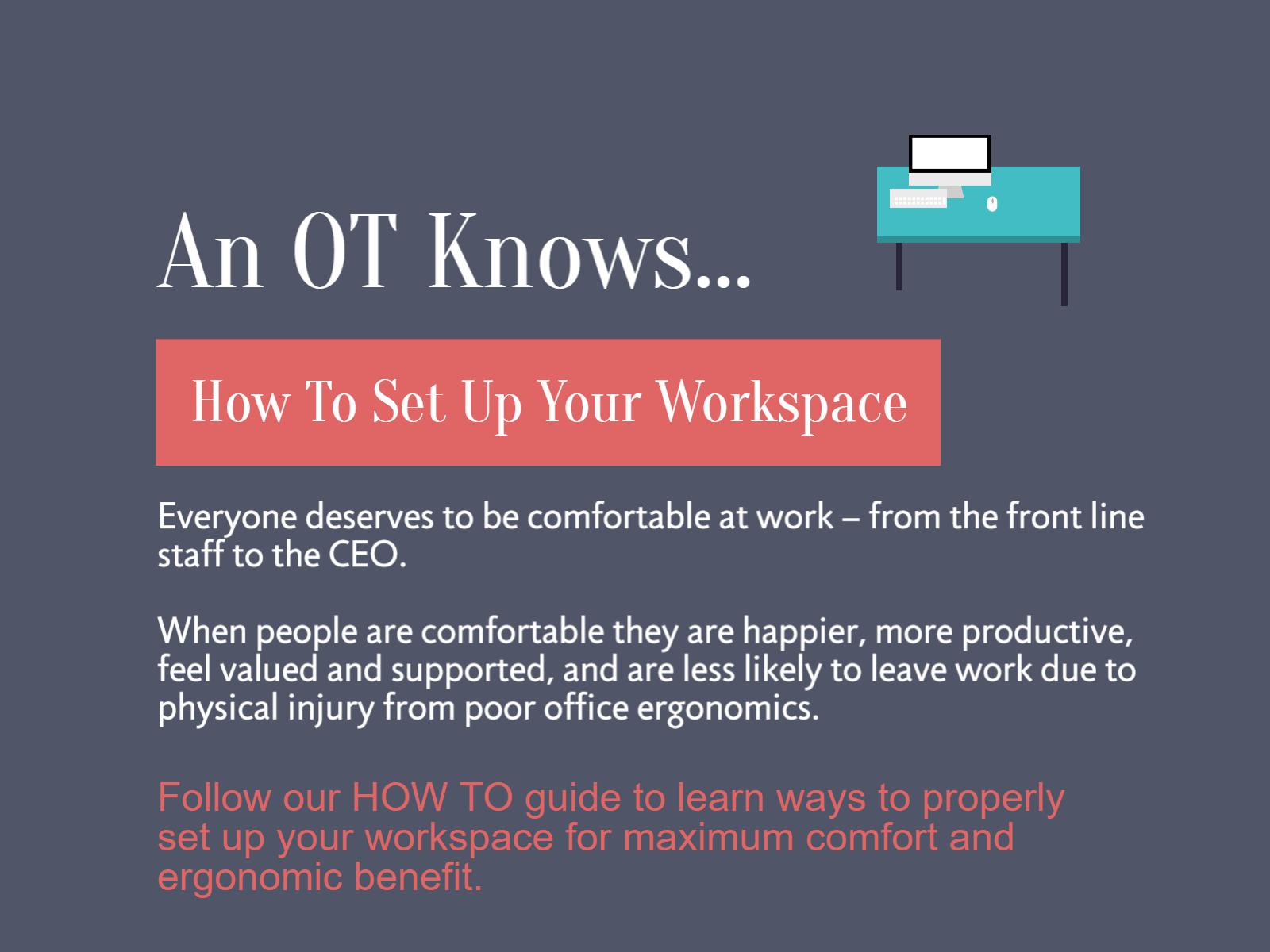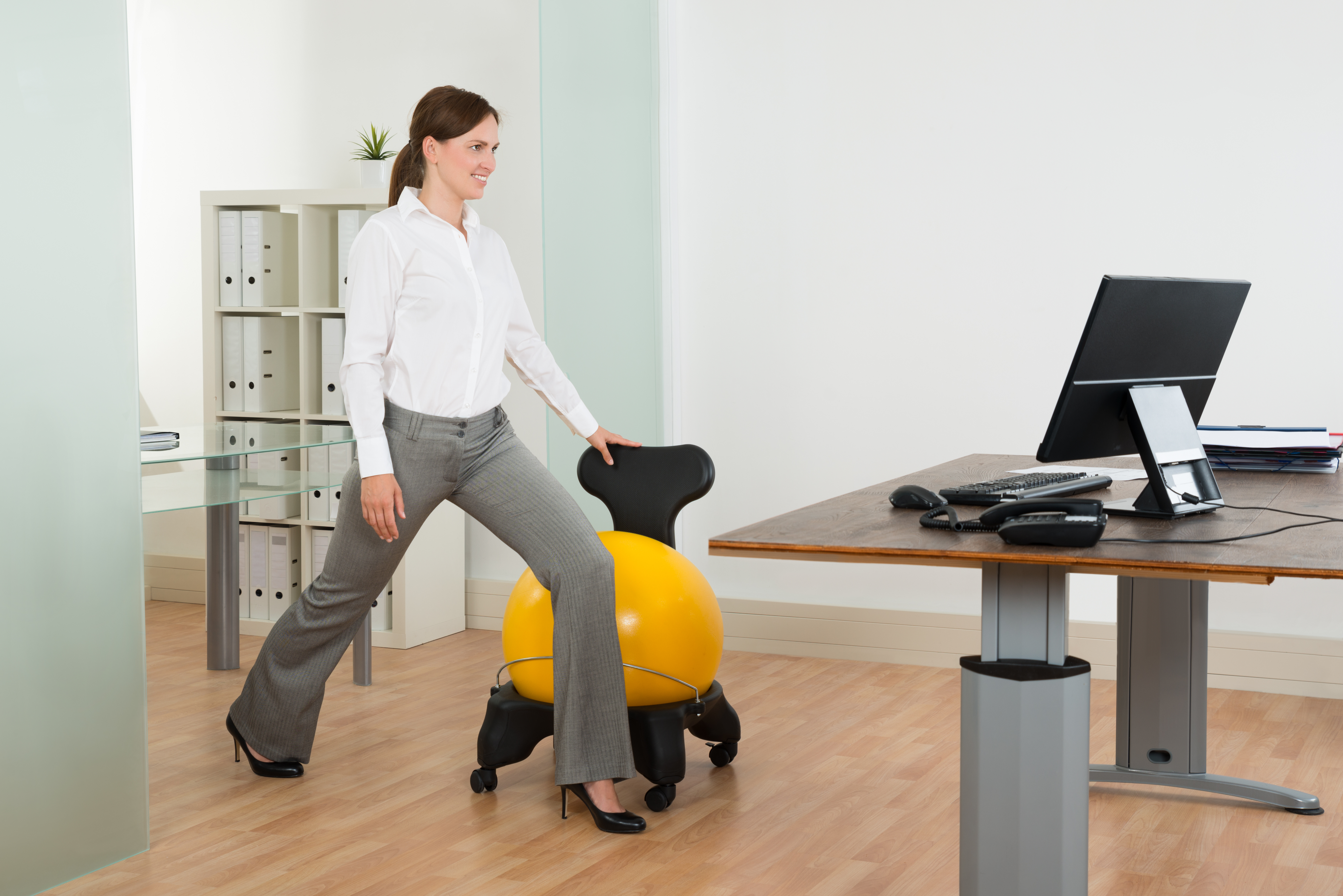The negative health effects of sitting for extended periods of time, coined as “sitting disease” has been a hot topic recently. Studies show that sitting for extended periods of time, as many of us do at work, while commuting, and even while watching television or reading, can lead to increased risk of heart disease, diabetes and a decreased lifespan. But while we need to work, how do we combat these negative effects?
Ergonomics addresses well-being and performance in relation to one’s job, equipment, tools and environment, with an overall goal to improve health, safety and efficiency of the worker and workplace. While the concept of ergonomics is no longer new, it involves much more than making sure your office chair is of the latest style. Due to the many different components involved in utilizing ergonomics to promote wellness and safety at work, some find it overwhelming and don’t know where to start. We’ve combined some of the most important and effective ergonomic tips together to make a quick reference guide for those looking for a starting point or those looking to brush up on their current strategies.
1. Take frequent breaks: We’ve said it before and we will say it again. Regardless of the job and job demands, humans were not meant to remain in static positions for long periods of time. Taking regular, brief breaks throughout the day allows us to avoid maintaining static positions, awkward postures and repetitive motions that lead to injuries. It is also important in terms of our cognition as this allows us to recharge and refocus to maintain productivity. Consider taking a 2-3 minute break for every 30 minutes of work.
2. Follow the rule of 90s: For those who are required to maintain sitting positions for long periods of time at their workstation, the rule of 90 degrees should be followed. This means that while sitting at a desk, a person’s knees, hips and elbows should each be resting at 90 degrees. This angle falls in line with our natural body proportions and biomechanics, and helps support proper posture and body positioning.
3. Seating matters: In a similar manner, seating is a key component when looking to support ergonomics. Chair height should be adjustable such that the back is firmly supported, thighs remain parallel to the floor and the feet are able to rest flat on the floor or a foot rest. The chair itself should have a sturdy support base and wheels, to allow easy mobility over flooring as well as the ability to swivel 360 degrees to avoid twisting, reaching and bending to access other items around the workstation. The more adjustable the chair the more you can fit it to YOU.
4. Change positions regularly: Just as with taking frequent breaks, regular position changes are important to avoid injuries. Whether it be taking a break to walk to the filing cabinet, or standing while having a phone conversation, make sure that regular changes in body position occur over the course of the day. Some companies are moving towards installing mobile workstations, which can be transferred from sitting to standing height to allow employees to alternate between periods of sitting and standing to complete work tasks, making regular position changes a habit is an effective and free way to avoid injury.
5. Inspect your screen: Many jobs today require long periods of screen time. If this is the case for your workstation, make sure that there is an arm’s length distance between your eyes and the screen. Also make sure that the top of the monitor or screen is level with your forehead. This allows for the head and neck to remain in a neutral position by avoiding continued periods of looking up or down. If a job requires frequent paper reading or phone use alongside computer use, consider a document holder or headset.
6. Keep tools and frequently used items close to your body: Whether it be having your chair tucked in close to your desk, or the location of your keyboard and other frequently used items like the mouse and telephone, ensure that these items remain close to the body. This allows you to avoid reaching, twisting at the trunk or adopting other awkward postures to obtain and use these items.
7. Stretch: This tip goes hand in hand with the use of regular breaks and position changes. Engaging in gentle stretching on a regular basis over the course of the day can address body stiffness and muscle tension in areas like the neck, shoulders and back. It also serves as a preventative strategy to keep the body moving and avoid injury before it happens. Grab a list of some simple stretches for your neck, shoulders, wrists and back and do these a few times a day.
8. Keep wrists neutral: Whether it be for keyboarding, use of a mouse or desk work, it is important that wrists are maintained in a neutral posture. This avoids potential for overuse and injury due to fixed postures of flexion. Try altering positions or using equipment such as a wrist rest to support the forearms.
9. Lighting matters: Improper lighting at a workstation can lead to glare, visual strain, headaches and reduced concentration. Make sure that lighting is neither too bright nor too low and that the location and angle is appropriate for the specific work task.
10. Ask for help: These tips are basic in nature and are meant to serve as general information. However, if you have more specific questions related to implementing ergonomics in your workplace, for a specific job or employee, seek the services of an Occupational Therapist. An OT can provide more thorough assessments and recommendations to maximize safety, health and efficiency at work.
Keep these principles in mind anytime you are in a static posture and are using a computer or workstation. Prevention is always the best medicine to avoiding injury and lost work time that can be so disruptive for you and your employer.
Check out our free e-book “Cost Effective Ergonomics Solutions” for more ergonomic solutions.










